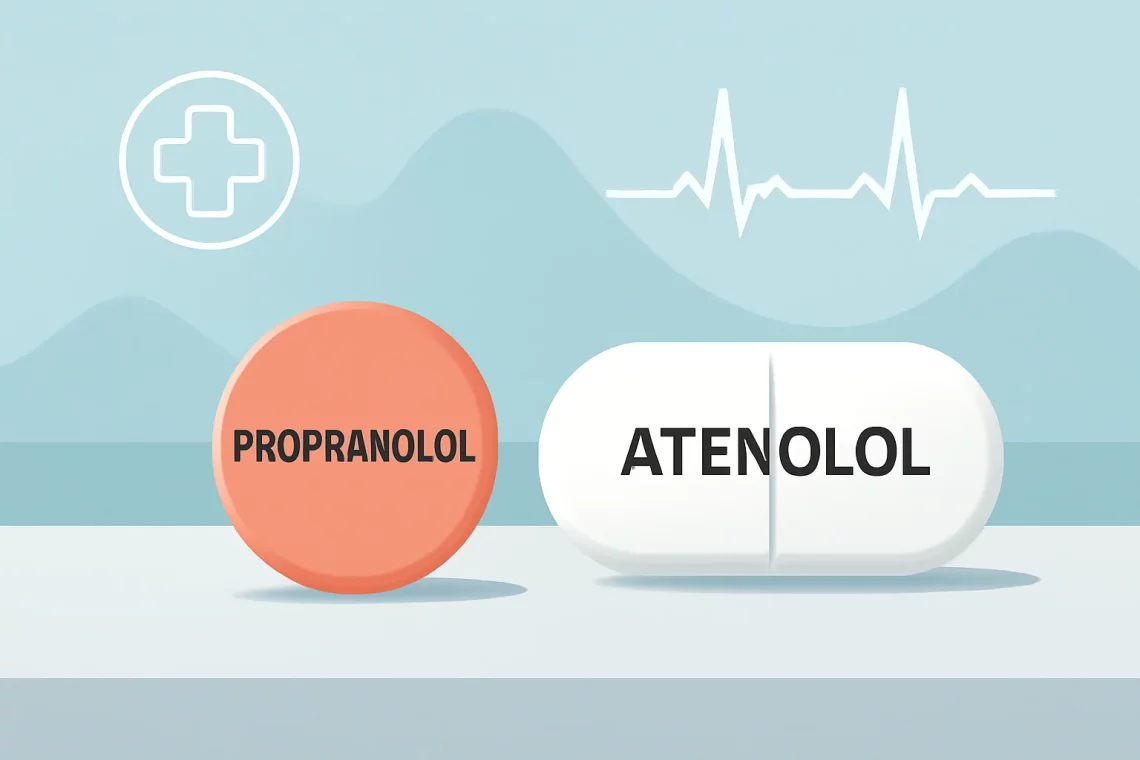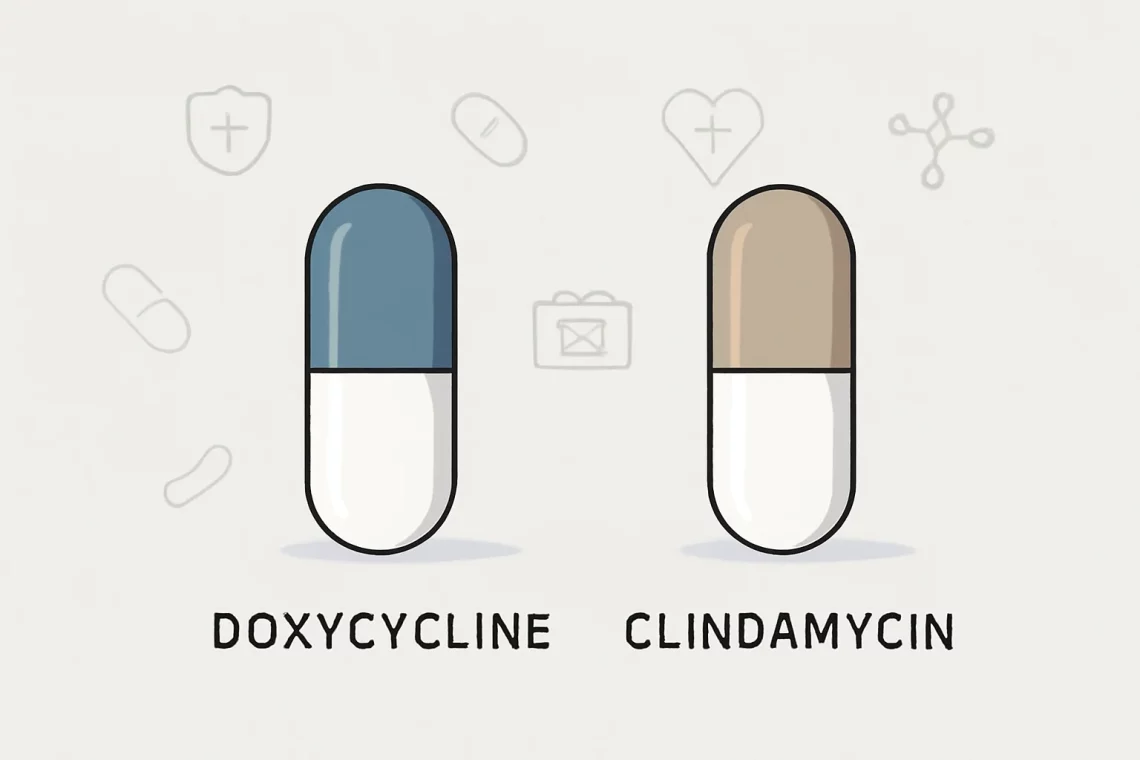-
Propranolol vs Atenolol: Which Beta-Blocker Is Right for You?
Propranolol and Atenolol are two widely prescribed medications that belong to the class of drugs known as beta-blockers. These medications are primarily used to manage various cardiovascular conditions, such as hypertension, angina, and arrhythmias. They can also be effective in treating other conditions, including anxiety and migraine prevention. Both drugs work by inhibiting the effects of adrenaline on the body’s beta receptors, which leads to a decrease in heart rate and blood pressure. Despite their similarities, Propranolol and Atenolol possess distinct pharmacological properties and clinical applications that can influence a physician’s choice of treatment. Understanding these differences is essential for patients and healthcare providers alike, as it can significantly impact…
-
Cymbalta vs Paxil: Comparing Two Popular Antidepressants
The landscape of mental health treatment has evolved significantly over the years, with a variety of medications available to help individuals manage conditions such as depression and anxiety. Among these medications, Cymbalta and Paxil have gained considerable attention for their effectiveness in treating mood disorders. While both of these drugs belong to different classes of antidepressants, they are often compared due to their similar applications and potential side effects. Cymbalta, known generically as duloxetine, is a serotonin-norepinephrine reuptake inhibitor (SNRI) that is commonly prescribed for depression, generalized anxiety disorder, and chronic pain management. Paxil, or paroxetine, is a selective serotonin reuptake inhibitor (SSRI) that is primarily used to treat major…
-
Lisinopril vs Enalapril: Which Medication is Right for You?
High blood pressure, medically known as hypertension, is a prevalent condition that affects millions of individuals worldwide. Managing hypertension is crucial for reducing the risk of serious health issues such as heart disease, stroke, and kidney failure. Among the various treatment options available, two commonly prescribed medications are Lisinopril and Enalapril. Both belong to a class of drugs called angiotensin-converting enzyme (ACE) inhibitors, which work by relaxing blood vessels and lowering blood pressure. Understanding the differences and similarities between these two medications can help patients and healthcare providers make informed decisions about treatment options. While both Lisinopril and Enalapril serve the same primary purpose, they have unique characteristics, including varying…
-
Doxycycline vs Clindamycin: A Comprehensive Comparison of Antibiotics
Doxycycline and clindamycin are two widely used antibiotics that play crucial roles in the treatment of various bacterial infections. Each of these medications has unique mechanisms of action, indications, and side effects, making them suitable for different clinical scenarios. Understanding the distinctions between doxycycline and clindamycin can help patients and healthcare professionals make informed decisions regarding antibiotic therapy. As antibiotic resistance continues to pose a significant challenge in modern medicine, the appropriate selection of antibiotics is vital to ensure effective treatment while minimizing the risk of developing resistant strains of bacteria. With a comprehensive understanding of both medications, healthcare providers can tailor their prescriptions to the specific needs of their…
-
Ciprofloxacin vs Cipro: Understanding the Differences and Uses
Ciprofloxacin and Cipro are terms that often create confusion among patients and healthcare providers alike. Understanding the nuances between these two can significantly impact treatment outcomes. Ciprofloxacin is a broad-spectrum antibiotic belonging to the fluoroquinolone class, widely utilized for treating various bacterial infections. It works by inhibiting bacterial DNA gyrase, a vital enzyme necessary for DNA replication and repair, thereby effectively stopping bacterial growth. Cipro, on the other hand, is simply a brand name for ciprofloxacin. While the two terms are often used interchangeably, it’s essential to recognize that Cipro represents a specific formulation of the active ingredient ciprofloxacin. Brand names like Cipro may also include other inactive components that…
-
Clindamycin vs Bactrim: Choosing the Right Antibiotic for You
Clindamycin and Bactrim are two commonly prescribed antibiotics that serve important roles in the treatment of various bacterial infections. Both medications are effective but differ in their mechanisms of action, spectrum of activity, and potential side effects. Understanding these differences is essential for both healthcare providers and patients to make informed decisions about treatment options. Antibiotics like Clindamycin and Bactrim are vital tools in modern medicine, addressing infections that can range from mild to life-threatening. They work by targeting bacterial cells, either killing the bacteria or inhibiting their growth. However, with the rise of antibiotic resistance, the careful selection of the appropriate antibiotic is crucial. Factors such as the type…
-
Naproxen vs Anaprox: Key Differences and Similarities Explained
Naproxen and Anaprox are both nonsteroidal anti-inflammatory drugs (NSAIDs) primarily used to relieve pain and reduce inflammation. While they share a common active ingredient, their formulations and specific uses can differ. Understanding the nuances between these two medications is crucial for patients and healthcare providers alike. The choice between them can depend on several factors including the specific condition being treated, the desired duration of pain relief, and individual patient response. As we navigate the complexities of pain management, it’s essential to gain a comprehensive understanding of how these medications function, their potential side effects, and the circumstances under which one might be preferred over the other. The need for…
-
Meloxicam vs Diclofenac: Which Pain Reliever is Right for You?
Meloxicam and diclofenac are both nonsteroidal anti-inflammatory drugs (NSAIDs) that play a significant role in managing pain and inflammation. These medications are frequently prescribed for various conditions, including arthritis, musculoskeletal pain, and post-surgical discomfort. While they share similar properties, their mechanisms of action, efficacy, and side effects can vary considerably. Understanding the differences and similarities between meloxicam and diclofenac can help patients and healthcare providers make informed decisions regarding pain management strategies. As the demand for effective pain relief continues to rise, it becomes crucial to evaluate the options available. Patients often seek alternatives to traditional pain medications due to concerns about side effects, dependency, or effectiveness. Both meloxicam and…
-
Adderall vs Mydayis: Which ADHD Medication is Right for You?
Adderall and Mydayis are two commonly prescribed medications used to treat Attention Deficit Hyperactivity Disorder (ADHD). Both of these stimulant medications aim to enhance concentration, reduce impulsivity, and improve overall cognitive function for those diagnosed with ADHD. However, despite their similar purposes, they differ in various aspects, including their composition, duration of action, side effects, and the way they are metabolized in the body. Understanding these differences can help patients and caregivers make informed decisions about which medication might be more suitable for their specific needs. As the prevalence of ADHD continues to rise, so does the importance of effective treatment options. Patients often seek medications that not only alleviate…
-
Gemtesa vs Detrol: A Comprehensive Comparison of Urinary Medications
Gemtesa and Detrol are two medications that have gained attention for their roles in managing urinary conditions, particularly overactive bladder (OAB). With an increasing number of individuals experiencing symptoms such as urgency, frequency, and incontinence, understanding the available treatment options becomes crucial. Both Gemtesa and Detrol are designed to alleviate these symptoms, yet they operate through different mechanisms and may suit different patient profiles. As the healthcare landscape continues to evolve, patients and healthcare providers are increasingly seeking effective solutions to enhance quality of life. The choice between Gemtesa and Detrol can be influenced by various factors, including the severity of symptoms, potential side effects, and individual health considerations. This…







































